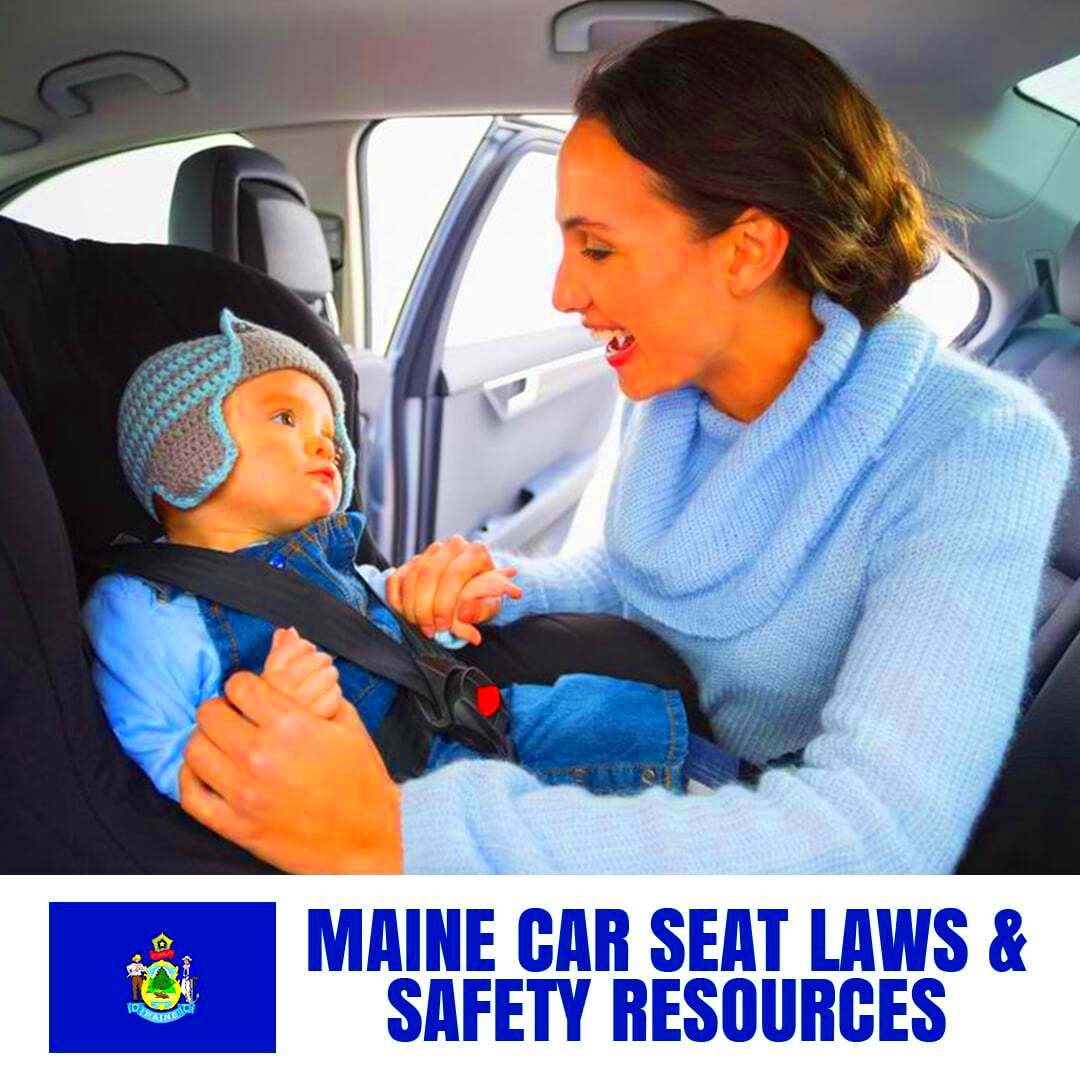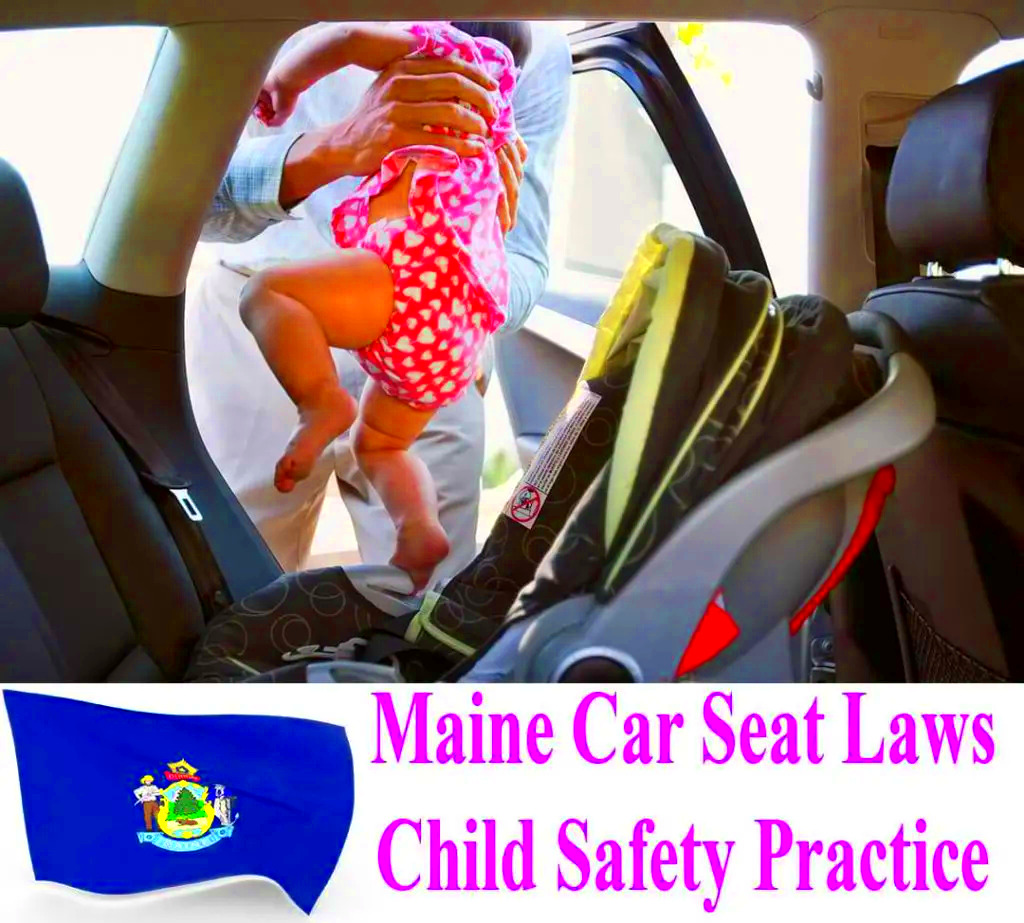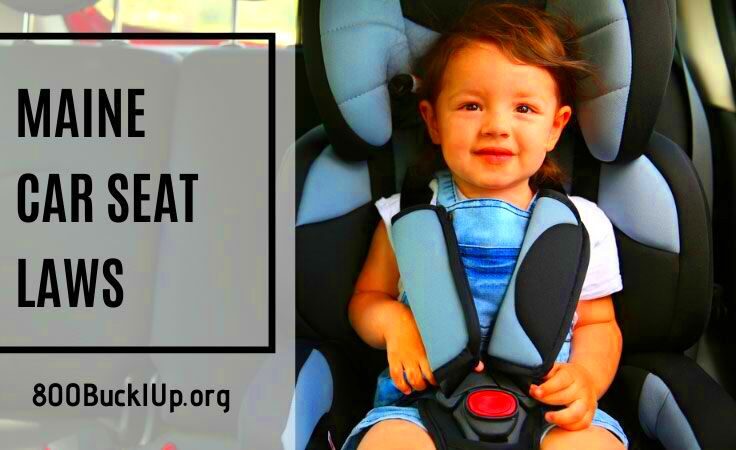Car Seat Laws in Maine and Keeping Your Child Safe
When it comes to ensuring your child’s safety in the car, knowing the car seat laws in Maine is crucial. These laws are designed to protect young passengers and reduce the risk of injury during accidents. Maine’s car seat laws require specific types of seats based on your child’s age and size. Familiarizing yourself with these regulations not only helps you comply with the law but also enhances your child’s safety on the road.
Types of Car Seats and Their Uses

There are several types of car seats, each designed for different stages of a child’s development. Here’s a quick overview:
- Infant Car Seats: Suitable for newborns and infants up to about 2 years old. These seats are rear-facing and provide the best protection for small children.
- Convertible Car Seats: These can be used both rear-facing and forward-facing. They accommodate children from infancy up to 4 years or more, depending on the model.
- Booster Seats: Used for children who have outgrown their car seats but are not yet ready for an adult seat belt. They help position the seat belt properly over a child’s body.
- Seat Belts: Once a child is at least 8 years old or reaches a height of 4 feet 9 inches, they can use a regular seat belt without a booster seat.
Choosing the right car seat is essential for keeping your child safe. Always follow the manufacturer’s instructions for installation and usage.
Age and Weight Requirements for Car Seats

Maine’s car seat laws are specific about age and weight limits to ensure that children are in the appropriate seat for their size. Here are the general requirements:
| Age Group | Weight Requirement | Car Seat Type |
|---|---|---|
| Birth to 2 years | Up to 35 pounds | Rear-facing infant car seat |
| 2 to 4 years | Over 35 pounds | Convertible car seat (rear or forward-facing) |
| 4 to 8 years | Over 40 pounds | Booster seat |
| 8 years and older | At least 80 pounds | Adult seat belt |
Always check the specific requirements for your child’s car seat and ensure it’s appropriate for their age and weight. This practice will significantly improve their safety while traveling.
Installation Tips for Car Seats

Proper installation of car seats is crucial for your child’s safety. Even the best car seat won’t protect your child if it’s not installed correctly. Here are some tips to ensure your car seat is installed safely:
- Read the Manual: Start by thoroughly reading both your car seat’s manual and your vehicle’s owner manual. Each car seat can have different installation instructions.
- Use the Right Seat Belt: Ensure you’re using either the seat belt or the LATCH system correctly. LATCH stands for Lower Anchors and Tethers for Children and is designed to make installation easier and more secure.
- Check for Tightness: After installation, make sure the seat doesn’t move more than an inch side to side or front to back. If it does, readjust it until it feels secure.
- Angle the Seat Correctly: For rear-facing seats, the angle is crucial. Most seats come with a built-in level indicator to help you position it correctly.
- Keep It Rear-Facing: Children should stay in rear-facing seats until they reach the maximum height and weight limits specified by the car seat manufacturer.
Taking the time to install your car seat correctly can make all the difference in keeping your child safe during travel.
Common Mistakes Parents Make with Car Seats
Even with the best intentions, many parents make mistakes when it comes to car seat safety. Here are some common errors to avoid:
- Forward-Facing Too Soon: Switching to a forward-facing seat before the child meets the age and weight requirements can be dangerous.
- Incorrect Harness Use: Not securing the harness properly is a frequent mistake. The straps should lie flat and snug against your child’s body, with the chest clip at armpit level.
- Loose Installation: A car seat that isn’t installed tightly can be a major risk. Always check that it’s secure after installation.
- Not Following Height and Weight Limits: Ignoring the car seat manufacturer’s guidelines can lead to unsafe situations. Always follow the specific guidelines for height and weight limits.
- Using Expired Seats: Car seats have expiration dates for a reason. An expired seat may not provide adequate protection.
By being aware of these mistakes, you can take the necessary steps to ensure your child’s safety while traveling.
How to Transition from Car Seat to Booster Seat
Making the switch from a car seat to a booster seat is an important step in your child’s journey. Here’s how to do it safely and smoothly:
- Know the Right Time: Transition to a booster seat when your child outgrows their forward-facing car seat. This usually happens when they reach the height or weight limit set by the manufacturer, typically around 4 years old and 40 pounds.
- Choose the Right Booster Seat: There are two types of booster seats—high-back and backless. High-back boosters provide head and neck support, while backless boosters are generally more portable.
- Correct Positioning: Ensure that the seat belt fits your child correctly when using a booster seat. The lap belt should lie flat across the upper thighs, and the shoulder belt should cross the middle of the chest.
- Stay in Booster Mode: Children should stay in a booster seat until they are at least 8 years old or 4 feet 9 inches tall, whichever comes first. This helps ensure the seat belt fits properly.
- Lead by Example: Always wear your seat belt and encourage your child to do the same. Showing them how to buckle up correctly can instill safe habits.
Transitioning can be a big change for both you and your child, but taking these steps will help keep them safe and secure on the road.
Importance of Regularly Checking Car Seats
Regularly checking your child’s car seat is vital for ensuring their safety during travel. Over time, car seats can become loose, worn, or outdated, compromising their effectiveness. By making it a habit to inspect your car seat, you can catch potential issues before they become serious problems.
- Check for Proper Installation: Every few months, take a moment to ensure your car seat is still tightly installed. It should not move more than an inch in any direction.
- Inspect the Harness: Examine the harness system for any frays, twists, or damage. Make sure it still fits your child snugly.
- Update for Growth: As your child grows, they may outgrow their car seat. Regular checks can help you determine if it’s time to transition to a different seat.
- Look for Recalls: Occasionally, car seats can be recalled due to safety issues. Stay informed about any recalls related to your car seat model.
- Check Expiration Dates: Car seats have a limited lifespan, usually around six to ten years. Make sure to check the expiration date on your seat and replace it if necessary.
By regularly checking your car seat, you can ensure that it remains a safe environment for your child while traveling.
Resources for Parents on Car Seat Safety
Staying informed about car seat safety is essential for every parent. Fortunately, there are many resources available to help you make the best choices for your child. Here are some valuable options:
- NHTSA (National Highway Traffic Safety Administration): This organization offers comprehensive information on car seat laws, installation tips, and safety guidelines.
- Local Health Departments: Many local health departments provide car seat safety checks and educational resources to help parents understand proper usage.
- Car Seat Manufacturers: The websites of car seat manufacturers often include detailed guides and instructional videos for proper installation and usage.
- Community Programs: Check for community events or workshops focused on child passenger safety. These often include hands-on assistance with car seat installation.
- Parent Support Groups: Online forums and social media groups can be great places to connect with other parents for advice and shared experiences regarding car seat safety.
Utilizing these resources can empower you to make informed decisions and ensure your child’s safety in the car.
FAQs about Car Seat Laws in Maine
As a parent, you may have questions about car seat laws in Maine. Here are some frequently asked questions that can provide clarity:
- What are the car seat laws in Maine? Maine requires children to be in a rear-facing car seat until they are at least 2 years old. After that, they can transition to a forward-facing seat until they outgrow it, usually around 4 years old.
- When can my child use a booster seat? Children should use a booster seat from ages 4 to 8, or until they reach 4 feet 9 inches tall, whichever comes first.
- Are there weight limits for car seats? Yes, each car seat has specific weight limits. Always refer to the manufacturer’s instructions for the correct limits for your child’s seat.
- Can I use a second-hand car seat? It’s best to avoid second-hand seats unless you know the seat’s history, including any accidents it may have been involved in. Always check for recalls and expiration dates.
- What should I do if my car seat is recalled? If your car seat is recalled, follow the manufacturer’s instructions for returning or replacing the seat. Always register your car seat with the manufacturer to receive recall notifications.
Being informed about these questions can help you navigate car seat laws in Maine and keep your child safe on the road.
Conclusion on Keeping Your Child Safe
Keeping your child safe while traveling in a vehicle is a responsibility that every parent takes seriously. Understanding and following car seat laws in Maine, along with proper installation and regular checks, are crucial steps in this journey. By using the right type of car seat for your child’s age and size, you significantly reduce the risk of injury during accidents. Regularly checking the seat for proper installation and wear can catch potential issues early. Additionally, utilizing available resources and staying informed about best practices enhances your child’s safety. Remember, the goal is to create a secure environment for your child while traveling, ensuring peace of mind for you as a parent. Your diligence in adhering to car seat safety can make all the difference in protecting your most precious cargo.


